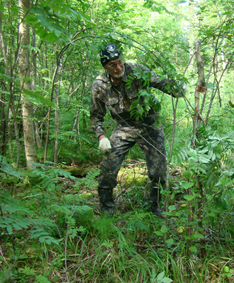
Igor Burtsev’s other exclusive images from the Russian expedition are after his narrative, including ones of the footprint found in the Siberian cave.
November 1, 2011

Igor Burtsev’s other exclusive images from the Russian expedition are after his narrative, including ones of the footprint found in the Siberian cave.
The following is Igor Burtsev’s unedited hominology and cryptozoology results from recent events in Russia (including Siberia):
The International Scientific-Practical Conference on Hominology, organized by the International Center of Hominology (Igor Burtsev, director), with the assistance of the State Darwin Museum in Moscow (Anna Klyukina, director) and the Administration of the Tashtagol District (Vladimir Makuta, Administration Head) was held on the initiative and with the support of Dr. Aman Tuleyev, Governor of the Kemerovo Region, and a Member of the Federation Council (a Senator) Dr. Sergey Shatirov, in Gornaya (Montaneous) Shoria, on October 5 – 8, 2011.
It happened at the first time for last 50 years after the failure of an expedition to the Pamir mauntains arranged by the Commission on the question of Snowman under the Soviet Academy of Sciences, when the Governmental authorities paid attention and funded such an event as this conference, which was attended by known hominoid researchers from five countries jf the world.
Conference participants gathered in Moscow and had the first session in the State Darwin museum on October 5, after on October 6 in Tashtagol City, heard and discussed presented reports.
In the program of the Conference the participants also took part in field trips to the Azass cave and the Karatag mountain. During these field trips fresh substantial evidences were obtained of the presence in Gornaya Shoria of bipedal primates, standing very close to Homo sapiens in their essence and intellectual development. The usual names for them in the popular press in Eurasia are “snowman”, yeti, almas, almasty; in North America — bigfoot and sasquatch; in scientific circles — hominoid (homin, for short), troglodyte.
The evidences exist, first of all, in the form of so-called “markers”, i.e. specific wooden structures. (These structures are long established signs of hominoid habitats in North America, Eurasia and Australia). Such markers were found first by Anatoly Fokin, conference participant from the city of Kirov, already on foot way to the Azass cave: young fir tree tops broken at the height of 2.5 meters. Another evidence – specifically broken branches of a big larch downed probably by hurricane, attracted the attention of Robin Lynne from Mich, USA; and what was most spectacular — a double arch construction, each one of two rowan tree crowns that were intertwined, resembling thus a wide gate, also discovered by Anatoly Fokin on approach to the cave.
In the cave itself, humanlike footprints were found, from one of which were picked up over a dozen hairs of unknown origin. Another track showed imprints of five toes, bigger than human, and even with dermal ridges, also bigger than human. The width of the imprint at the toes is 16 cm (6 1/2 “), which is half as much again compared to human foot as, for example Nikolay Valuev’s one. This footprint was next to a low long niche the floor of which was covered with a thick ‘carpet’ of ferns that were not yet fully dry and formed a soft bed.
All of that were evidences that the cave had recently been visited by at least one creature, sort of justifying its species name Homo troglodytes (caveman), that was given to it back in the 18th century by the great classifier Linnaeus.
Before ascending the Karatag, that translates from the Shor language as “Black Mountain”, our guide, Ust-Kabyrza policeman Valery Topakov, led us to one more arch structure of two young alders, whose tops were intertwined like it was in the arch in front of the cave. He found that arch a couple weeks ago while investigating a report by some guests-fishermen about a beast seen by them in that location.
By the way, a similar arch of a rowan and birch had been found two years ago by me together with local searchers in the St.-Petersbourg region.
Lastly, marvelous finds were brought by the climb up the Karatag mountain, where during my previous trips here numerous signs of homin presence had already been noted in the form of broken tree limbs and intertwined branches. This time it was an interesting shelter, made of a giant fallen fir tree, whose branches were bent and figured, thus forming a large niche, which can be used for having a rest or as shelter from bad weather, and was covered with pieces of broken branches of other trees. A meter distance from the entrance to it was another arch formed by a thin long alder trunk bent and stuck under the twig of a larch standing nearby.
But the most surprising structure was discovered by chance by a TV group: eight-nine young firs broken elsewhere, brought together and placed with their top against the trunk of a high fir, forming a conic shelter with entrance on one side.
All these finds are evidences of undoubted existence in the wilderness of Gornaya Shoria of hominoids, or troglodytes — bipedal beings that do not use fire, tools and garments, but who are close to Homo sapiens as regards their level of development.
Igor Burtsev
Burtsev’s gallery of images from Russia/Siberia:
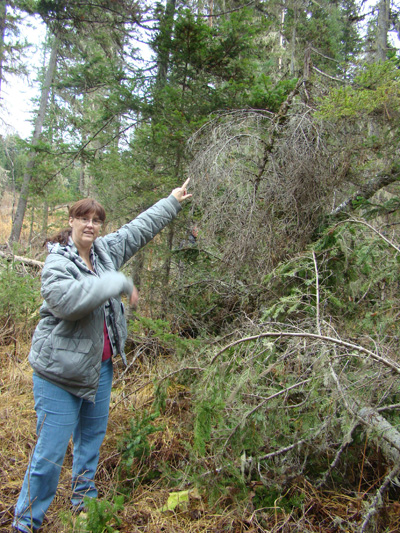

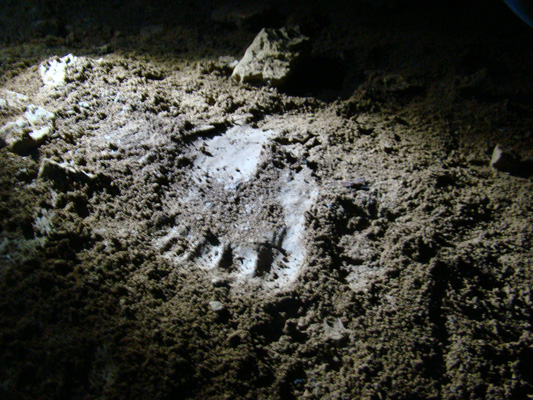
Footprint found in the Siberian cave (above and below).
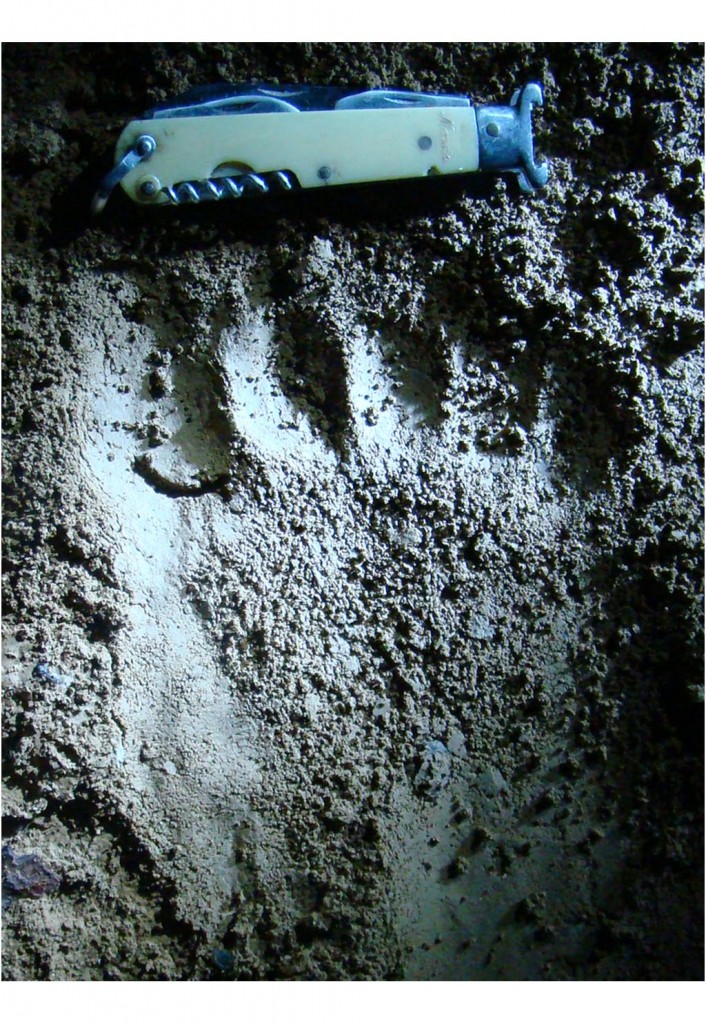
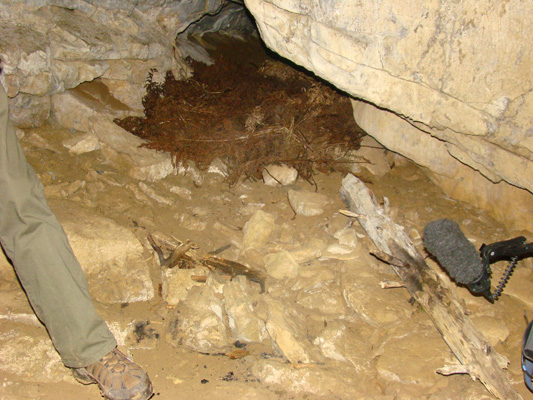
Bed in the cave.
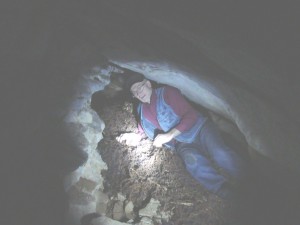




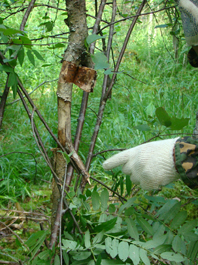
The arch and the drawing depicting details of the arch (above and below).
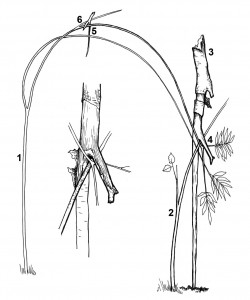
About Loren Coleman
Loren Coleman is one of the world’s leading cryptozoologists, some say “the” leading living cryptozoologist. Certainly, he is acknowledged as the current living American researcher and writer who has most popularized cryptozoology in the late 20th and early 21st centuries.
Starting his fieldwork and investigations in 1960, after traveling and trekking extensively in pursuit of cryptozoological mysteries, Coleman began writing to share his experiences in 1969. An honorary member of Ivan T. Sanderson’s Society for the Investigation of the Unexplained in the 1970s, Coleman has been bestowed with similar honorary memberships of the North Idaho College Cryptozoology Club in 1983, and in subsequent years, that of the British Columbia Scientific Cryptozoology Club, CryptoSafari International, and other international organizations. He was also a Life Member and Benefactor of the International Society of Cryptozoology (now-defunct).
Loren Coleman’s daily blog, as a member of the Cryptomundo Team, served as an ongoing avenue of communication for the ever-growing body of cryptozoo news from 2005 through 2013. He returned as an infrequent contributor beginning Halloween week of 2015.
Coleman is the founder in 2003, and current director of the International Cryptozoology Museum in Portland, Maine.
Filed under Abominable Snowman, Almas, Breaking News, Cryptomundo Exclusive, Cryptozoologists, Expedition Reports, Men in Cryptozoology, Yeti